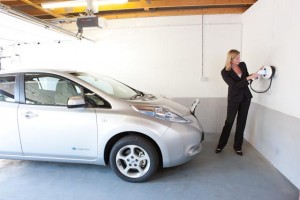 I’ve been an advocate for letting electric utilities build electric vehicle charging stations for a while now. While nobody likes the ideas of regulated monopolies taking over a market, the fact is that private companies are not getting the job done, and there aren’t sufficient charging stations to meet growing demand and to enable longer-distance electric travel.
I’ve been an advocate for letting electric utilities build electric vehicle charging stations for a while now. While nobody likes the ideas of regulated monopolies taking over a market, the fact is that private companies are not getting the job done, and there aren’t sufficient charging stations to meet growing demand and to enable longer-distance electric travel.
So I’ve been following with interest Pacific Gas & Electric’s (PG&E) proposal to serve the 65,000 EV drivers in its Northern California service territory with 25,100 charging stations (the number that may be necessary to meet Governor Brown’s goal of having one million EVs on the road by 2020).
But the California Public Utilities Commission would like to go slower than that, as Charged EVs reports:
[T]he state Public Utilities Commission has put a stop to PG&E’s dreams of empire for the moment, saying that it will need to hold a series of hearings before authorizing the program.
“We must consider the requirement to protect against unfair competition and the demonstrated costs and benefits of any utility electric vehicle charging station proposal,” PUC Commissioner Carla Peterman wrote in her ruling (via San Jose Mercury News). “We find that a more measured approach to utility ownership in PG&E’s service territory is warranted.”
One objection to PG&E’s plan is the cost: $654 million, which the utility plans to pass on to ratepayers. Under the original PG&E proposal, residential electricity customers would pay an additional 70 cents per month on their utility bills from 2018 to 2022.
Peterman also pointed out concerns that control of such a comprehensive network could give PG&E something of a monopoly. The utility’s plan calls for it to have control over the design and support of the charging facilities, something that other companies in the charging industry say could suppress innovation.
I think this approach could make sense. It may be best to go slow on the roll out to see how the market reacts. The CPUC could also ensure that the initial utility stations are located where there is no strong market incentive for private companies to site them. Ideally the state could end up with a hybrid system of some utility-owned stations and some private company-owned ones. The other possibility is that PG&E provides some of the underlying infrastructure for the stations, while charging companies then compete to set up chargers in those locations.
Either way, I imagine this is only the first step on a path to more utility-owned charging stations, and the result will hopefully be better coverage and convenience for EV drivers.
Leave a Reply
You must be logged in to post a comment.


